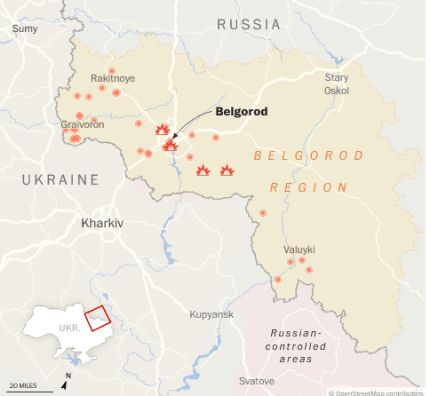Internal Russian documents show how often its glide bombs land on its territory, likely due to malfunctioning guidance systems, experts say.
Points of attention
- Internal Russian documents confirm that the Russian glide bombs fell on its territory due to a malfunction of the guidance systems.
- Most bombs dropped on Russian territory fail to detonate, but incidents can have serious consequences, the document shows.
- The impact of a planned bomb in the Belgorod region occurred at night, the explosion broke windows, threw cars onto the roofs of buildings, but fortunately, no one was injured.
- The Russian military admitted that the explosion was caused by an accidental release of ammunition from a Su-34 fighter bomber.
- Local authorities are silent about the incidents, trying to blame Ukrainian shelling or not reporting explosions that happened on their territory.
Planning bombs of the Russian Federation fall on their territories
The powerful glide bombs that Russia used to such significant effect to reduce Ukrainian cities to rubble were also falling on its territory, an internal Russian document showed.
According to a document obtained by The Washington Post, at least 38 bombs fueled by Russia's recent territorial advance fell in the Belgorod region on the border with Ukraine between April 2023 and April 2024. However, most of them did detonate after landing.
Roughly similar to America's more advanced JDAM-guided bombs, these cruise bombs are large Soviet-era munitions with upgraded guidance systems that experts say often fail, leading to strikes on Russian territory.
Most of the bombs were discovered by civilians - foresters, farmers or residents of the villages surrounding the city. In most cases, the Ministry of Defence did not know when the bombs were launched, indicating that some may have been there for several days.
According to the document, at least four bombs fell on the city of Belgorod itself, a regional center with a population of about 400,000 people. Another seven were found in the vicinity. The largest number, 11, fell in the border area of Grayvoron, where some could not be lifted due to the "difficult operational situation".
Initially intercepted by Ukrainian intelligence, the document contains a spreadsheet of incidents concerning bomb disposal and evacuation emergency decrees and appears to be the product of the Belgorod City Emergency Management Office.
Russian media outlet Astra confirmed that many of the incidents in the document match those gathered from local authorities and local media reports.

Do bombs cause damage to Russian cities?
Although bombs usually fail to detonate, one of the first recorded bombs that fell in Belgorod in April 2023 did explode when it hit a normally busy street, creating a 65-foot-wide crater, shattering windows and throwing parked cars onto building roofs. The attack happened at night, there were no casualties. A day later, a second unexploded bomb was found buried 23 feet deep in the ground.
The Russian military then admitted that the cause of the explosion was an "accidental release of aviation ammunition" from a Russian Su-34 fighter bomber. The document later confirmed that it was a FAB-500, a glide bomb with a payload of 500 kilograms or 1,100 pounds.
Local authorities are generally silent on the incidents, reporting only "accidents", blaming Ukrainian shelling, or simply not reporting the various explosions that have been ringing in the area, especially recently.




